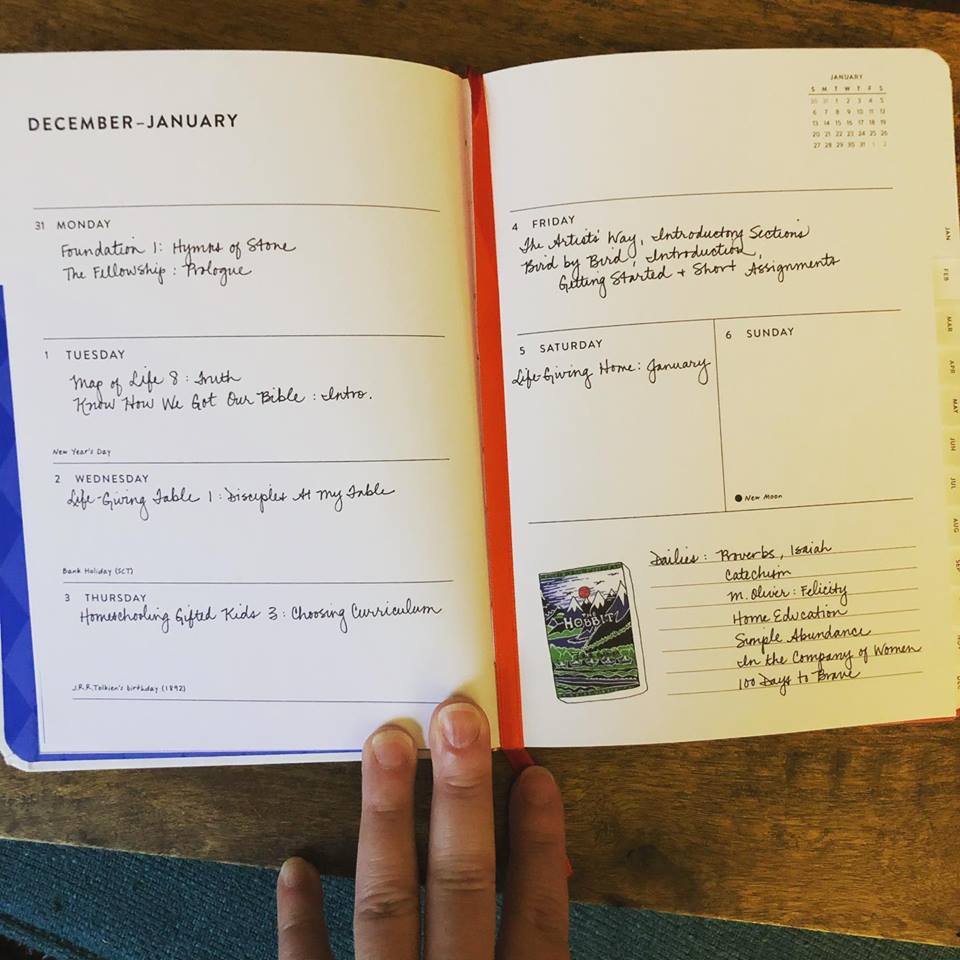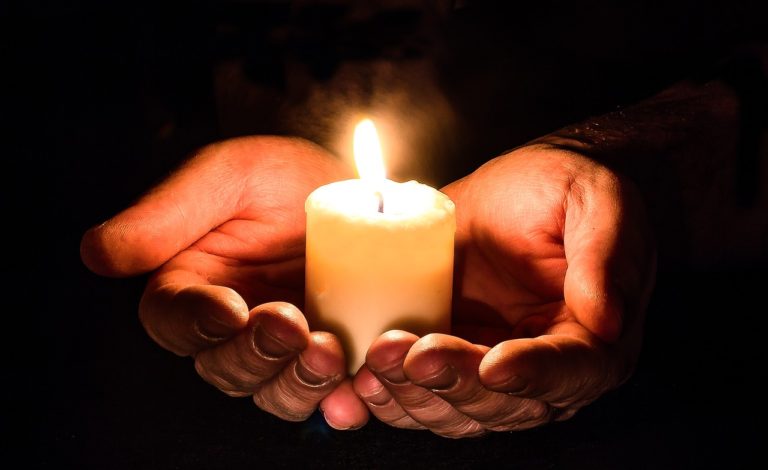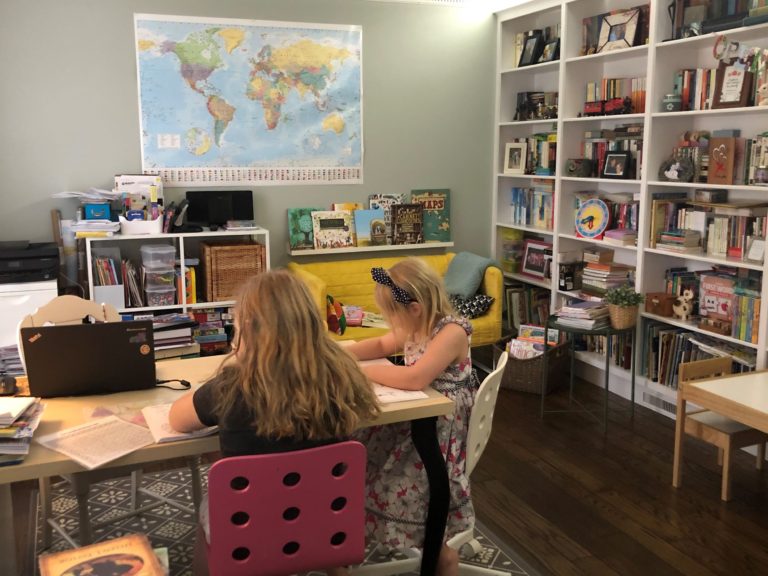How to Read More Abundantly and with Greater Intention
Friends and family members frequently say to me, “I could never read as much as you do. How do you find the time?” I always chuckle inwardly at this, because I know how my annual book count (I always set a goal of 52 books a year, which works out to a book a week) stacks up against the numbers of other people, thanks to Goodreads. When I try to explain my reading plan method, though, even the most interested people’s eyes eventually begin to glaze over, so today I’m going to try to answer this question as succinctly as I can for you.
Admittedly, my book stack–or rather, my book basket–is always fairly sizable, with anywhere from 10-20 books in it, but it wasn’t always this way. My reading habits as they exist today developed gradually. Also, I don’t expect you to implement my reading “system” point for point. There’s more than one path to an abundant and intentional reading life. The key is to find what works for you. I just hope that if you’re looking to develop a more intentional reading life, you’ll find a takeaway or two here to help you do that. To help you explore the approaches of other readers (not just me), I’ve linked to a few of my favorite resources for building a reading plan at the bottom of this post.
Four Kinds of Reading
Prior to recent years, I read one book at a time, mostly fiction but with some personal or spiritual growth books thrown in here and there. This was my childhood reading habit–reading organically (according to whim alone) for pleasure or interest–carried forward into adulthood. At some point, I became frustrated by this. I felt like I couldn’t get to all the books I wanted to read as quickly as I wanted to read them. And whenever I was interested in a nonfiction topic, there was a novel waiting to draw me away. I began to develop a habit of starting one book, then starting another, and another, because there were simply too many different things I wanted to read at the same time. I was surrounded by unfinished books. That’s when it dawned on me that I could approach my personal reading life differently if I could think about my reasons for reading with more clarity. So I began to mentally separate my reading into four buckets:
- Reading to learn
- Reading for personal growth
- Reading for inspiration
- Reading for pleasure
I realized I was always torn between reading for these four purposes, and sometimes even within these purposes, for example, if there was more than one topic about which I was interested in learning. If I could figure out a way to incorporate these four types of reading in a more balanced way, I thought, I might not feel so much at cross-purposes with myself.
Four Questions
At the beginning of every calendar year, I set some loose reading goals–content goals, that is, not number goals. I say “loose” here because I know that there will be new releases, recommendations from friends, choices based on my online book club, and books I pick up because of podcasts I listen to during the year. But I still like to begin with a general plan. I begin by asking myself the following questions:
- What am I interested in learning?
- In what ways do I want to grow?
- In what areas do I need to feel inspired?
- What books are already on my shelves?
For example, maybe I want to learn more about the evolution of Western literature, grow as a writer and as a mother, and be inspired to make my home more welcoming. I actually create a list of topics by answering these questions, and I write down that list in the front of my reading planner (more on that below). I usually have multiple answers to each question, which just means I will need to figure out how to incorporate a variety of topics into my reading year. I also list specific books I already own and want to ensure I read. I revisit my list, and these same four questions, whenever I hit a slump in planning my reading.
The Question of Time
Once you’ve decided what kind of reading you want to do, you need to hammer out the question of time to read. When will you read? For how long will you read? Can you commit to reading for a set amount of time, at the same time, each day? Are you willing to give up other things, like TV, in order to do more reading? I work full time and have two young daughters, so I have to be intentional about reading time. This means getting up between 5 and 6 a.m. every day in order to have time to read for 60-90 minutes. This is when I read from three of my four buckets: to learn, for growth, and for inspiration.
I also “read” audiobooks in the car, while I’m cooking dinner at night, while I’m folding laundry, and while I’m exercising, but I consider these my “extra” reads, and they aren’t planned or scheduled. Like Rory Gilmore, I always have a book (or rather, my Kindle) in my purse, so I can fit in a little reading whenever I have the opportunity. If you’re a public school mom, the carpool line can be a great place to get in some reading time. When I worked in an office, I read most days while I ate lunch and listened to audiobooks during my commute.
The College Syllabus Approach
I don’t know when the lightbulb came on, but at some point, it occurred to me that I could try to approach my reading life like a syllabus, or rather, a collection of syllabi. In a college course, you might read one or more books at a time over the course of a few, or even several, weeks. If you are taking a full course load, you have to juggle the reading for multiple courses at one time, completing the reading for each course before the next class. Why, I thought, couldn’t I do the same thing with my personal reading?
This is where my reading planner comes in.
Daily, Weekly, and Monthly Reading
My book stack, which changes gradually throughout the year since I don’t finish all the books in my stack at the same time, contains daily, weekly, and monthly reads. My daily reads are things I read in shorter segments, like the Bible, devotionals that have a short reading for each day, inspirational lifestyle-type books, and poetry. I have some friends who treat their whole book stack as dailies, reading a page or two a day, but I struggle with continuity when I do that. I prefer to treat most books as weeklies, reading a full chapter at a time. A few books are monthly or seasonal reads, such as a monthly book club pick, and books like The Life Giving Home by Sarah and Sally Clarkson, whose content applies to specific months or times of the year. I slot these in simply by substituting them for one of my other weeklies during the week I want to read them or by making time for them on the weekend.
I have a reading plan for Monday through Friday each week, and I lay out my reading in a planner designated just for this purpose. I like a planner that has weekly spreads, with a little note-taking section for my daily reads–that way I don’t have to write them down every day, but since they’re there as a list, I don’t forget any of them. In general, I read my daily books daily (usually on the weekends as well). I read five weekly books at a time, on a designated day, after the dailies.
Here’s a sample topical schedule to give you an idea of what this looks like:
- Monday: History
- Tuesday: Theology
- Wednesday: Marriage/Parenting/Home
- Thursday: Homeschooling
- Friday: Writing
This topical schedule changes during the course of the year as I finish books. For example, I might finish a history book and move on to a biography, in which case my Mondays would become biography days. Make sense?
Here’s an example of what this looks like laid out in my reading planner:
I reserve the weekends for playing catch-up (there are always mornings when my girls get up before I’ve finished my reading for that day, or mornings when I just need extra sleep) and spending more time with my current novel.
Having a reading plan written down helps prevent me from becoming distracted and ending up with a bunch of unfinished books lying around. If a new book interest comes my way, I add it to the list in the front of my planner and work it in when I have an opportunity.
I have learned not to plan too far ahead and to be flexible. A book with lengthy or very meaty chapters might take two weeks per chapter, for example. Or I might decide to alternate two books, switching back and forth between a history and a biography on Mondays, or between a marriage book and a parenting book on Wednesdays. Sometimes I realize I am trying to read too much for the time I have, and I set something aside temporarily. I sit down every Sunday and make my reading plan for the week ahead, which takes about five minutes.
Fiction: Bedtime Reading
Fiction is the only thing that doesn’t go into my reading planner. I read fiction daily, before bed as well as on the weekends. I also don’t plan my fiction choices. This is the one area where whim and mood drive me, and I still read one book at a time. This way, my pleasure reading doesn’t get in the way of my other reading, I have time for it daily, and I just get to enjoy it for as long as my eyes will stay open.
Your own reading plan can be as regimented or as flexible as you need it to be in order to create a more abundant, more intentional reading life.
My Favorite Resources for an Abundant Reading Life:
The Read-Aloud Revival Podcast, Episode 70: How to Find Time to Read as a Busy Mom
The Read-Aloud Revival Podcast, Episode 119: Delighting in Your Own Reading Life with Anne Bogel
The What Should I Read Next? Podcast with Anne Bogel
Book Girl: A Journey through the Treasures and Transforming Power of a Reading Life by Sarah Clarkson
I’d Rather Be Reading: The Delights and Dilemmas of the Reading Life by Anne Bogel



I love this so much! Can’t wait to plan out my reading! Thank you for sharing!